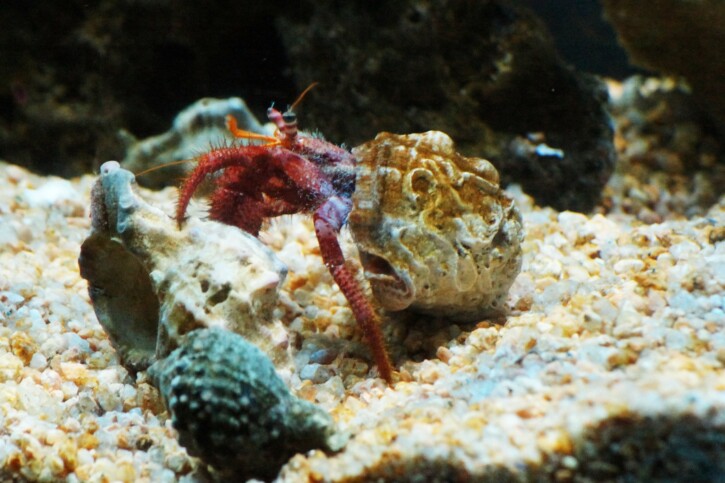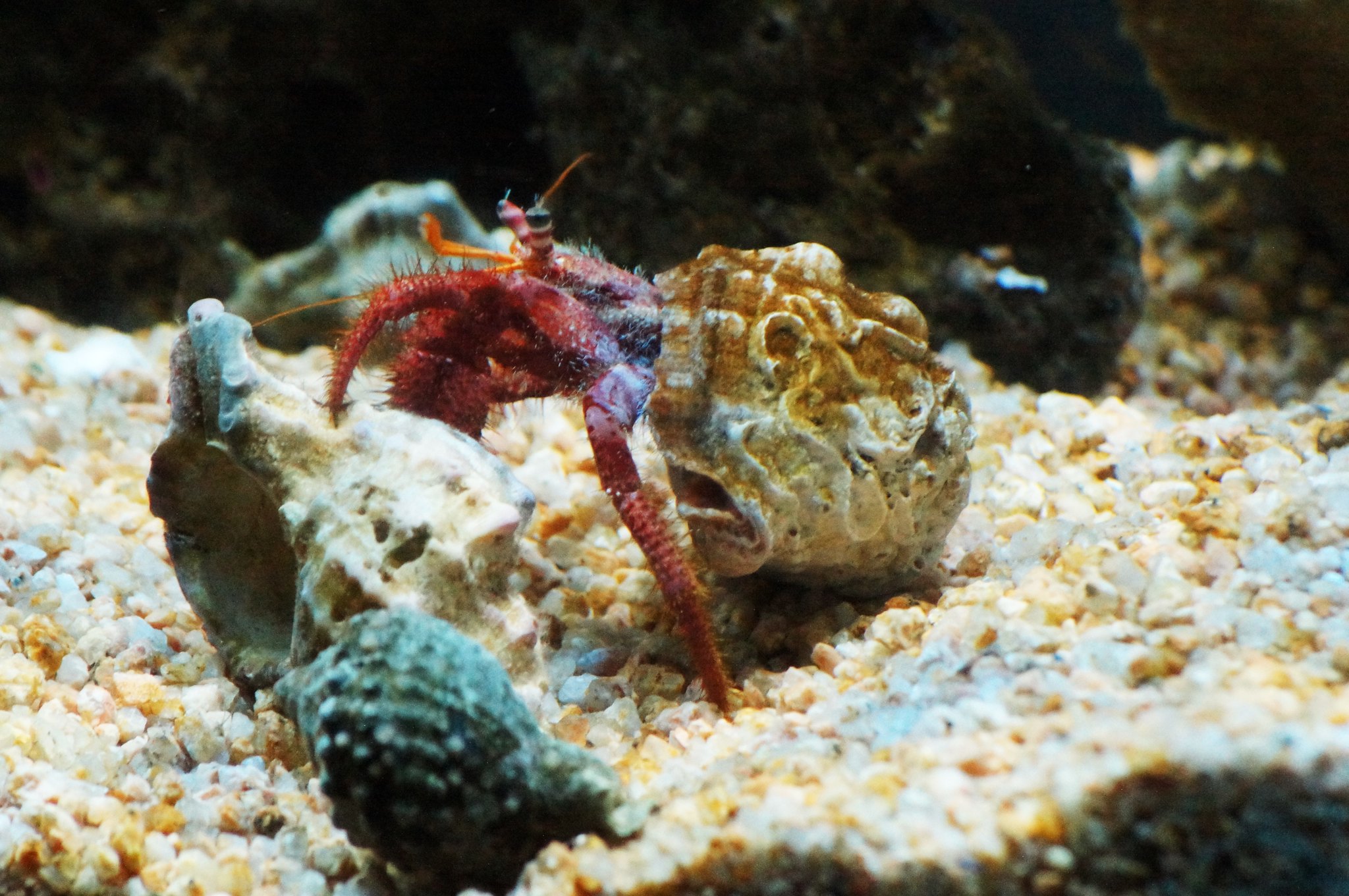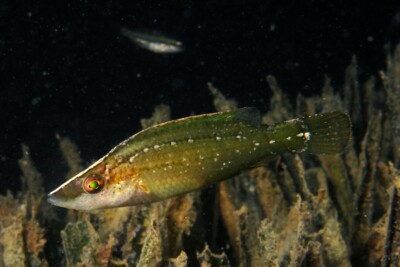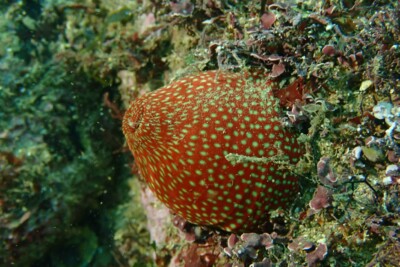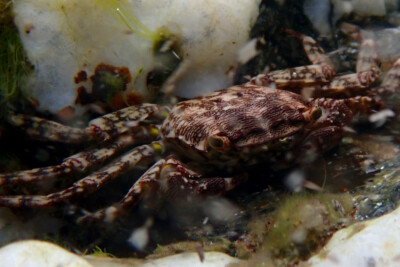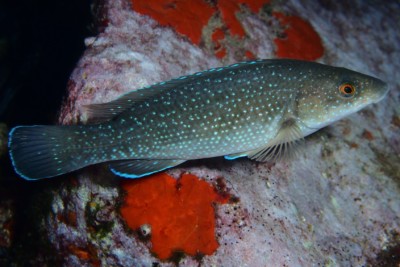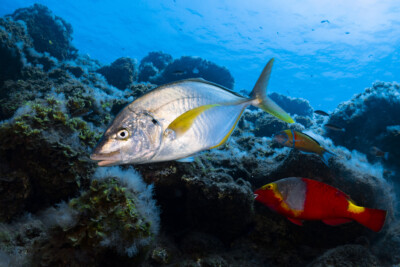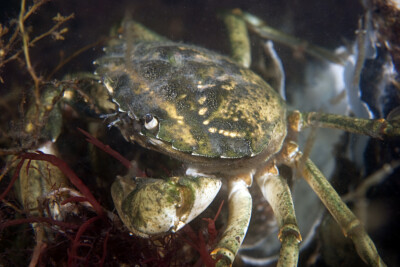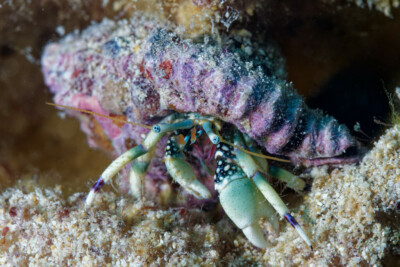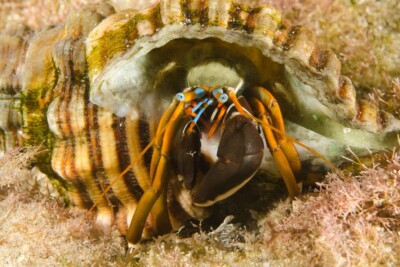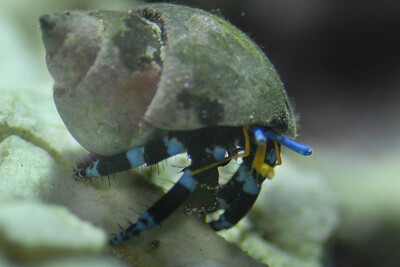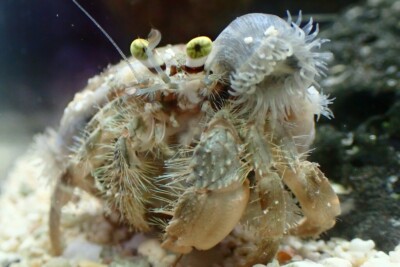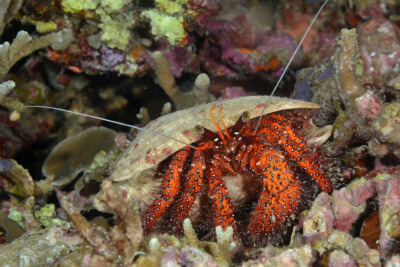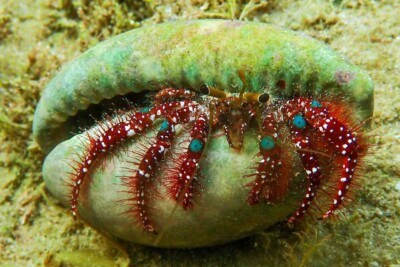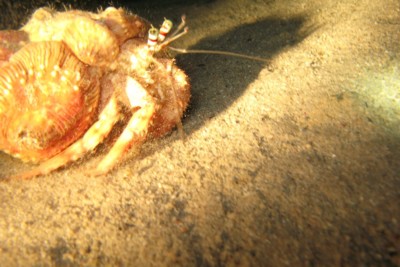Introduction
Dardanus calidus is a salt water crustacea.
This sheet is currently being prepared. The texts currently proposed come from our data model or are being drafted. To request priority for this content, you can write to us HERE.
Who is it?
Morphology
-
Average size10 cm
-
Maximum size12 cm
-
ShapeUnclassifiable
-
Average size10 cm
-
Maximum size12 cm
-
ShapeUnclassifiable
How to recognize this crustacea ?
Dardanus calidus measures between 10 and 12 cm. this crustacea is tricolore with a predominantly rouge, orange and rose body.
Behaviour & Life cycle
-
Sociabilitysolitary
-
territorialNo
-
VenomousNo
-
Way of livingnocturnal
Like all crustaceans, Dardanus calidus molts whenever it becomes cramped in its shell. Before the hardening of its new body, it is more vulnerable and spends a good part of its time hidden. This mechanism, very complex, allows the periodic renewal of the exoskeleton and part of the internal skeleton. It is also during the moult that the females become fertile.
Dardanus calidus is a crustacea solitary. This species is scavenger . this crustacea lives mainly at night. Usually, it leaves its hiding place and starts to be active once it gets dark.
Although Dardanus calidus is non-territorial, it is sometimes aggressive towards other species.
Reproduction
-
Reproductionovipare
Dardanus calidus is a crustacea ovipare.
Harmless species
This species does not represent any particular threats to humans when encountered in its natural environment.
Origin and distribution
What is its habitat?
Natural environment characteristics
-
Depth3 - 30 m
Biotope presentation
Dardanus calidus is most often found at a depth between 3m and 30m. However, it is not impossible to find this species at other depths.
This species lives in decaying vegetation (branches, leaves) in low current areas.
Species of the same biotope
To go further
Sources & Contributions
Participation & Validation
The Fishipedia team and specialist contributors are committed to providing high-quality content. However, although the information comes from scientific sources or testimonials from specialists, the cards may contain inaccuracies.

Aurélien Calas
Translation
Translation done with the valuable contribution of our translators, who make this information available to a wider audience. We sincerely thank them for their commitment.
Bibliographic references
- - GBIF
- - Symbiosis of sea anemones and hermit crabs: different resource utilization patterns in the Aegean Sea - Anna-Maria Vafeiadou - Chryssanthi Antoniadou - Chariton Chintiroglou - Springer link - 2011. 66
Scientific partners
Tags
Species of the same family
Same genus
Species of the same biotope
